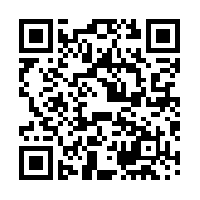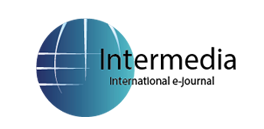Position of Communication in Medical Education: A Study on Curriculums of Medical Faculties in Turkey
Abstract
Health communication is a discipline with the purpose of raising individual and public awareness about diseases and preventi- ve measures, consisting of communication strategies and practices that focus on the protection and improvement of health as well as gaining health back. In spite of the widening scope of health communication, what is emphasized is the micro-level of the area with the traditional perspective, and communication between providers of health care service and patients has been observed to have primary significance. In the literature, it has been acknowledged that communication education should be added to the curriculums of medical schools due to the contribution successful management of doctor-patient communicati- on could make to the achievement of desired results in health care service. This study, done in line with the aforementioned agreement in the literature, has been designed to learn whether 104 Turkish medical faculties, which provide undergraduate medical education, has added any theoretical courses or education centered on communication skills to their curriculum, and to determine how they construct their courses and education aimed at improving communication skills. The findings of the research have shown that the majority of the faculties has theoretical communication education in their curriculums. It has been seen that some faculties offer theoretical communication education as a separate course in their curriculums while some others integrate it into other courses as a topic.
Full Text:
PDFReferences
Bachmann, C., Abramovitch, H., Barbu, C. G., Cavaco, A. M., Elorza, R. D., Haak, R., ...Rosenbaum, M. (2013). A European Consensus on Learning Objectives for A Core Communication Curriculum in Health Care Professions. Patient Education and Counseling, 93, 18 – 26.
Başol, E. (2018). Hasta Ile Sağlık Çalışanları (Doktor ve Hemşire) Arasındaki İletişim Sorunları ve Çözüm Önerileri. International Anatolia Academic Online Journal, 4(1), 1 – 18.
Berry, D. (2007). Health Communication Theory and Practice. England: Open University Press.
Campbell, S. H., Pagano, M. P., O’Shea, E. R., Connery, C. & Caron, C. (2013). Development of the Health Communication Assessment Tool: Enhancing Relationships, Empowerment, And Power – Sharing Skills. Clinical Simulation in Nursing, 9, 543 – 550.
Çınarlı, İ. (2008). Sağlık Iletişimi ve Medya. Ankara: Nobel Yayın Dağıtım.
Dalen, J. (2013). Communication Skills in Context: Trends and Perspectives. Patient Education and Counceling, 92, 292 – 295.
Deveugele, M. (2015). Communication Training: Skills and Beyond. Patient Education and Counceling, 98, 1287 – 1291.
Dutta, M. J. (2009). Health Communication: Trends and Future Directions. J. C. Parker & E. Thorson (Eds.). In
Health Communication in the New Media Landscape (59 – 92). New York: Springer Publishing Company.
Edgerton, E. (2009). Changing Health Behavior Through Games. R. E. Ferdig (Ed.), Handbook of Research On Effective Electronic Gaming In Education. (370 – 387). Hershey: IGI Global.
Hamel, P. C. (2010). The Meaning Of Health Communication: Maybe They Just Don’t Know What They Don’t
Know?. Journal of Communication In Healthcare, 3(2), 98 – 112.
Higher Education Institute (YÖK). https://www.yok.gov.tr/universiteler/universitelerimiz, Access Date: 01.09.2019.
İrak, H., Taşçıoğlu, R., Dal, M. & Tunç, Y. (2017). Sağlık Hizmetleri Meslek Yüksekokulu Öğrencilerinin İletişim Becerileri: Iğdır Üniversitesi Örneği. Atatürk İletişim Dergisi, Special Issue, 187 – 202.
Kiessling, C., Dieterich, A., Fabry, G., Hölzer, H., Langewitz, W., Mühlinghouse, I., ... Schubert, S. (2010). Communication and Social Competencies in Medical Education In German – Speaking Countries: The Basel Consensus Statement Result Of A Delphi Survey. Patient Education and Counceling, 81, 259 – 266.
Kreps, G. L. (2012). Health Communication Inquiry and Health Outcomes. Comunicação E Sociedade, Special Issue, 11 – 22.
Kreps, G. L., Bonaguro, E. W. & Query, J. L. (1998). The History and Development of the Field of Health Communication. L. D. Jackson & B. K. Duffy (Eds.). In Health Communication Research: Guide to Developments and Directions. (Pp. 1 – 15). Westport, CT: Greenwood Press.
Kreps, G. L. & Thornton, B. (1992). Health Communication: Theory and Practice. USA: Waveland Press.
Koçak, A. & Bulduklu, Y. (2010). Sağlık İletişimi: Yaşlıların Televizyonda Yayınlanan Sağlık Programlarını İzleme
Motivasyonları. Selçuk İletişim Dergisi, 6(3), 5 – 17.
Mckeever, B. W. (2014). The Status of Health Communication: Education and Employment Outlook for A Growing Field. Journal of Health Communication, 19(12), 1408 – 1423.
Okay, A. (2012). Sağlık İletişimi. İstanbul: Derin Yayınları.
Ratzan, S. C., Stearns, N. S., Payne, J. G., Amato, P. P., Liebergott, J. W. & Madoff, M. A. (1994). Education for The Health Communication Professionals: A Collaborative Curricular Partnership. American Behavioral Scientist, 38(2), 361 – 380.
Rosiek – Kryszewska, A., Leksowski, L. Rosiek, A., Leksowski, K. & Goch, A. (2016). Clinical Communication in the Aspect of Development of New Technologies and E – Health in the Doctor – Patient Relationship. A. Rosiek & K. Leksowski (Eds.). In Organizational Culture and Ethics in Modern Medicine. (pp. 18 – 51). Hershey: IGI Global.
Schiavo, R. (2007). Health Communication from Theory to Practice. San Francisco: John Wiley & Sons.
Shin, K. R., Jung, D. & Shin, S. J. (2011). Communication and Nursing Relationships. A. Cashin & R. Cook (Eds.). In Evidence – Based Practice in Nursing Informatics: Concepts and Applications. (pp. 25 – 39). Hershey: IGI Global.
Solmaz, B. & Duğan, Ö. (2018). Sağlık Çalışanı ile Hasta Yakınları Arasında Yaşanan Şiddetin Nedenlerinden İletişim Üzerine Bir İnceleme. AİBÜ Sosyal Bilimler Enstitüsü Dergisi, 18(2), 185 – 206.
Street, R. L. & Haes H. C. J. M. (2013). Designing A Curriculum for Communication Skills Training from A Theory and Evidence – Based Perspective. Patient Education and Counseling, 93, 27 – 33.
Xie, J., Ding, S. Wang, C., & Liu, A. (2013). An Evaluation of Nursing Students’ Communication Ability During Practical Clinical Training. Nurse Education Today, 33, 823 – 827.
Yılmaz, E. (2013). Türkiye’de Hastaların İnternette Tıbbi Enformasyon Arama Davranışının Doktor – Hasta İletişimine Etkileri. Galatasaray İletişim Dergisi, Special Issue, 93 – 108.
DOI: http://dx.doi.org/10.21645/10.21645/intermedia.2020.82
Refbacks
- There are currently no refbacks.
Copyright (c) 2020 Intermedia International e-Journal ISSN:2149-3669

This work is licensed under a Creative Commons Attribution-NonCommercial-NoDerivatives 4.0 International License.
Indexing and Abstracting Services
Mailing Address
 | Intermedia International e-Journal E-mail : intermedia@ticaret.edu.tr |
Intermedia International e-Journal ISSN:2149-3669

Bu eser Creative Commons Alıntı-GayriTicari-Türetilemez 4.0 Uluslararası Lisansı ile lisanslanmıştır.




